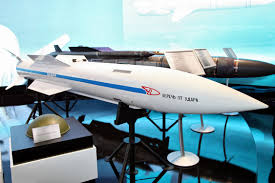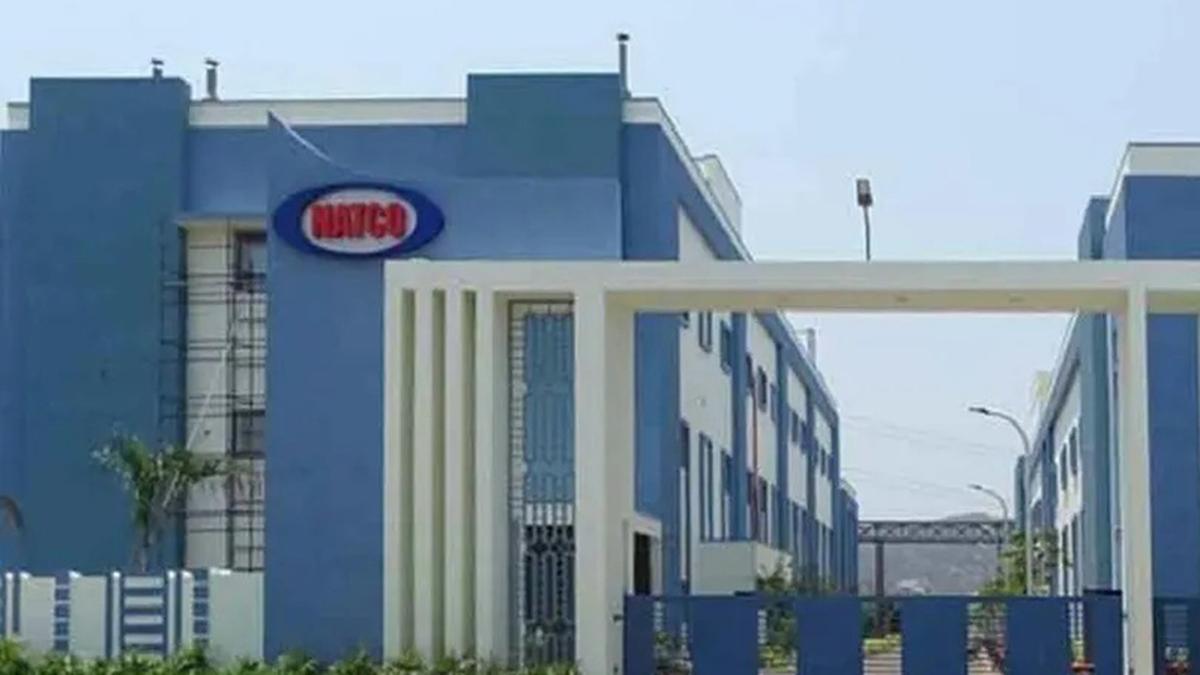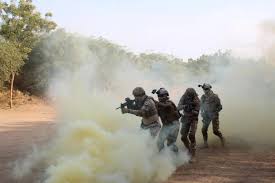India introduces HS Code for GI-Tagged Rice Exports

- 13 Feb 2025
In News:
India has amended the Customs Tariff Act, 1975, becoming the first country in the world to introduce a Harmonised System (HS) code for Geographical Indication (GI)-tagged rice varieties. This was announced in the Union Budget 2025–26.
Key Features of the Amendment
- HS Code Introduced For:
- 1006-30-11 – GI-tagged parboiled rice
- 1006-30-91 – GI-tagged white rice
- Objective:
- To enable uninterrupted exports of GI rice even during general export restrictions or bans.
- GI rice exports will not require special government notification during such bans.
About Harmonised System (HS) Code
- Full Form: Harmonised System Code
- Developed by: World Customs Organization (WCO)
- Structure: 6-digit global standard; India uses an 8-digit extension for more specific classification.
- Purpose: Classification of traded goods for customs, tariffs, and trade statistics.
- HS Code Hierarchy:
- First 2 digits: Chapter (e.g., “10” for cereals)
- Next 2 digits: Heading (e.g., “06” for rice)
- Last 2 digits: Subheading (e.g., “30” for semi-milled or wholly milled rice)
Impact on GI Rice Exports
- Facilitates global market access for Indian specialty rice varieties.
- Differentiates GI-tagged rice from conventional rice in trade documents.
- Prevents mislabeling and misuse of India’s GI rice identity.
- Allows exports of GI rice even under export bans, without fresh government clearance.
GI-Tagged Rice Varieties in India
- 20 GI-recognized rice varieties, including:Navara, Palakkadan Matta, Pokkali, Wayanad Jeerakasala, etc.
- 20 pending GI applications, including:Seeraga Samba, Jammu & Kashmir Red Rice, Wada Kolam Paddy, etc.
About the World Customs Organization (WCO)
- Established in 1952 as the Customs Co-operation Council; renamed WCO in 1994.
- Headquarters: Brussels, Belgium.
- Membership: 183 customs administrations, including India, covering 98% of global trade.
- Key Functions:
- Maintains and updates the HS Code every 5 years.
- Drives customs modernization through instruments like the Revised Kyoto Convention (RKC).
- Coordinates anti-smuggling, anti-counterfeiting, and trade enforcement efforts.
- Collaborates with global institutions like the WTO and UN to enhance trade efficiency.
Quipu Superstructure

- 13 Feb 2025
In News:
Astronomers have discovered the largest known cosmic structure, named Quipu, in a study led by Hans Bohringer of the Max Planck Institute. The findings are part of efforts to map matter distribution in the universe using redshift data between 0.3 to 0.6, revealing some of the most distant known objects.
Key Features of Quipu:
Attribute Description
Type Superstructure (clusters of galaxy superclusters)
Length ~1.3 billion light-years (Over 13,000 times the Milky Way’s size)
Mass ~200 quadrillion (2 × 10¹?) solar masses
Components ~70 galactic superclusters
Shape Central filament with multiple branching filaments (named after the Incan “Quipu” cord system)
Cosmic Significance:
- Gravitational Lensing (GL): Due to its enormous mass, Quipu bends light from background objects, distorting sky images.
- Cosmic Microwave Background (CMB): Its gravitational field causes fluctuations in the CMB—the relic radiation from the Big Bang.
- Hubble Constant Impact: Quipu and similar structures distort measurements of the Universe’s expansion rate.
Scientific Context:
- Superstructures: Extremely large arrangements of matter including groups of galaxy clusters and superclusters.
- Quipu is hundreds of thousands of times more massive than a single galaxy.
- Discovered at a distance of 425 to 815 million light-years from Earth.
Other Superstructures Identified:
Alongside Quipu, astronomers identified four other massive structures:
- Shapley Supercluster
- Serpens-Corona Borealis Superstructure
- Hercules Supercluster
- Sculptor-Pegasus Superstructure
Together, these five structures:
- Contain ~45% of all galaxy clusters
- Include ~30% of galaxies
- Hold ~25% of the matter in the universe
- Occupy ~13% of the universe’s volume
Future Evolution:
- Scientists consider Quipu a "transient configuration".
- It is expected to break into smaller collapsing units in the future, altering cosmic structures over time.
R-37M Missile

- 13 Feb 2025
In News:
Russia has recently offered the R-37M missile, a state-of-the-art, long-range air-to-air missile, to India. This missile, one of the world’s most advanced, has the potential to transform India's aerial defense capabilities. The offer also comes with the opportunity for India to license the production of this missile domestically. However, the acquisition of such a potent weapon is raising tensions in the region, particularly with Pakistan, China, and Bangladesh, and has broader strategic implications.
Overview of R-37M Missile:
The R-37M, also known by its NATO reporting name AA-13 Axehead, is a hypersonic, long-range air-to-air missile developed by Russia.
It is designed to target high-value assets, such as AWACS (Airborne Warning and Control Systems), tanker aircraft, and other support platforms, beyond visual range (BVR).
Evolved from the R-33 missile, the R-37M significantly enhances air combat capabilities due to its range, speed, and precision.
- Speed and Range: The missile can travel at speeds of up to Mach 6 (approximately 7,400 km/h), enabling it to intercept fast-moving aerial threats. It has an operational range of 300-400 km (160-220 nautical miles), making it one of the longest-reaching air-to-air missiles.
- Weight: The missile weighs 510 kg, with a 60 kg warhead.
- Guidance System: It uses an advanced combination of inertial navigation with mid-course updates, active radar homing, and semi-active radar guidance for the terminal phase.
- Combat Advantage: The R-37M can target beyond visual range, enabling the launching aircraft to engage enemy targets while remaining outside the reach of enemy missiles.
Impact on the Indian Air Force (IAF):
The R-37M missile could replace the current R-77 missile used by India’s Sukhoi Su-30MKI fighter jets. This acquisition will bolster India's air defense by providing enhanced capabilities to intercept aerial threats at greater distances. Additionally, the offer to license the local production of the missile is a significant step toward strengthening India’s defense industry and reducing its dependence on foreign weapon systems. This move can also contribute to India's strategic autonomy in military engagements.
Strategic Implications for Pakistan:
Pakistan’s Air Force (PAF) primarily relies on F-16 fighter jets for its aerial superiority. However, these aircraft are vulnerable to interception beyond the Line of Control (LoC) by the R-37M, which has an engagement range of up to 400 kilometers. This could significantly alter Pakistan's defense posture, as its aircraft would be exposed to threats from Indian aircraft even before crossing the LoC.
Potential Effects on China:
China, which already possesses advanced air-to-air missiles such as the PL-15 and PL-21, will closely monitor India’s acquisition of the R-37M missile. While China is not directly threatened by the missile due to its own advanced defense systems, India’s missile capabilities could alter the balance of air superiority in the region. The acquisition could prompt China to accelerate the development of counter-hypersonic technologies, potentially altering the trajectory of military developments in the region.
Impact on Bangladesh:
Bangladesh, which shares friendly relations with India, could find itself caught in the strategic competition between India and Pakistan, despite its own military capabilities not directly challenging India. The regional military dynamics, influenced by India’s acquisition of advanced weapons like the R-37M, may push Bangladesh to enhance its defense capabilities, either through regional alliances or by procuring advanced defense technologies.
India-Russia Defense Relations:
India’s defense cooperation with Russia has been longstanding and substantial. Between 2015 and 2020, India’s defense imports from Russia were valued at approximately $10 billion, making Russia one of India’s largest defense suppliers. Around 70% of India's defense equipment is of Russian origin. Key joint defense projects include:
- BrahMos Missile: A joint venture to develop a supersonic cruise missile.
- S-400 Triumph: A $5.4 billion deal for five S-400 air defense systems.
- AK-203 Assault Rifles: A project for the local manufacturing of over 700,000 rifles.
- Military Exercises: India and Russia conduct joint military exercises, such as the INDRA (focused on counter-terrorism) and AVIAINDRA (aerial exercises between the Indian Air Force and Russian Aerospace Forces).
Pulmonary Arterial Hypertension (PAH)

- 13 Feb 2025
In News:
- Natco Pharma, a Hyderabad-based generic drug manufacturer, has received final approval from the U.S. Food and Drug Administration (USFDA) for its generic version of Bosentan tablets for oral suspension (32mg).
- This drug, a generic version of Actelion Pharmaceuticals’ Tracleer, is used to treat Pulmonary Arterial Hypertension (PAH), a condition characterized by high blood pressure in the lungs.
- The approval comes after Natco's successful submission of an abbreviated new drug application (ANDA), which was jointly developed with its marketing partner, Lupin Pharmaceuticals, Inc.
- Natco believes that it holds the sole first-to-file status for the product, which qualifies it for a 180-day exclusivity period upon launch. The exclusivity period would allow Natco to be the only supplier of the generic product in the U.S. market for a limited time, which could offer significant market share before generic competition arrives.
- Bosentan, the active ingredient in Tracleer, is prescribed for patients suffering from PAH, a progressive condition that raises the blood pressure in the lungs and causes strain on the heart.
- The treatment helps to improve pulmonary vascular resistance and is indicated for patients aged three years and above, including those with idiopathic or congenital PAH. The product is expected to improve exercise capacity and overall quality of life for these patients.
- In the U.S., Bosentan 32mg oral suspension generated an estimated $11 million in sales for the 12 months ending September 2024.
Pulmonary Arterial Hypertension (PAH) Overview
- It is a specific type of pulmonary hypertension in which the small arteries in the lungs become thickened and narrowed. This results in obstructed blood flow and increased pressure in the pulmonary arteries, which makes the heart work harder to pump blood through the lungs.
- The exact cause of PAH remains unclear, though it is believed to result from injury to the cells lining the blood vessels in the lungs, leading to long-term vascular disease.
- PAH can develop in association with several medical conditions, including congenital heart disease, liver disease, HIV, and autoimmune diseases like scleroderma and lupus. It can also be triggered by past or current drug use, such as the abuse of methamphetamine or the use of certain diet pills.
Symptoms of PAH include:
- Shortness of breath that worsens over time
- Fatigue and dizziness
- Chest pain
- Cyanosis (blue fingers or lips)
- Fainting episodes
While there are treatment options available for PAH, including medications that help manage the symptoms and slow disease progression, there is currently no known cure. PAH remains a significant area of concern in pulmonary healthcare, and the introduction of generic Bosentan by Natco Pharma offers a more affordable treatment option for patients in the U.S.
Exercise Cyclone 2025

- 13 Feb 2025
In News:
- The third edition of the India-Egypt Joint Special Forces Exercise CYCLONE is being conducted from February 10–23, 2025 at the Mahajan Field Firing Range, Rajasthan.
- The previous edition (2nd) was held in Egypt in January 2024, and the first edition was conducted in India in 2023.
About Exercise CYCLONE
- It is a bilateral joint special forces military exercise between India and Egypt.
- Annual exercise, held alternatively in India and Egypt.
- The 2025 edition is focused on:
- Counter-terrorism operations
- High-intensity combat training
- Survival techniques in desert/semi-desert terrain
- Tactical drills and real-world combat scenarios
- Motto of the exercise: “Together we train, together we excel.”
Objectives
- Enhance military-to-military cooperation.
- Strengthen interoperability and joint operational capabilities.
- Exchange of special warfare tactics and combat strategies.
- Operate under frameworks aligned with Chapter VII of the UN Charter (pertaining to threats to peace, breaches of peace, and acts of aggression).
Strategic Importance
- The exercise reflects deepening India-Egypt defence cooperation.
- Aimed at enhancing readiness for evolving security challenges in the region.
- Enables both forces to operate together in simulated combat situations, improving coordination and adaptability.
India-Egypt Relations: Defence and Beyond
- Strategic Partnership established in 2023, covering:
- Political, defence, security, energy, and economic cooperation.
- Bilateral Trade Agreement (1978): Based on Most Favored Nation (MFN) clause.
- India is one of Egypt’s key trading partners in Africa.
